How would Princess Diana have dressed today?

The late Princess Diana’s wardrobe has been immortalized in books, exhibitions, Netflix series, tribute photo shoots in Vogue and even a musical. From her fairytale wedding gown to the so-called “revenge dress” she wore after the now King Charles III admitted to infidelity, the world witnessed her style transformation into the “People’s Princess.”
“Her style was so very much her own,” said Jack L. Carlson, whose label Rowing Blazers launched a Diana-inspired clothing line in 2020. “She was not a follower. To the contrary, she did her own thing, and we all watched in wonder and tried to keep up.”
There is still plenty of nostalgia surrounding Princess Diana’s style — indeed, when Carlson’s label re-released her iconic black sheep sweater, he sold “three months worth of sweaters in an hour and a half” after it went viral online, he said.
But how might Diana have dressed were she alive today? And how might she have employed her penchant for tactful, symbolic and communicative fashion in this divisive age?
Ahead of what would have been her birthday on July 1, we look back at the influences that informed her style — and how they might have shaped her modern day look.
Fashion influence
The Princess of Wales was adept at using her wardrobe diplomatically. Whether choosing designers from countries she was visiting, or wearing colors and symbols associated with hosts’ national identities, she used clothing as nods of support and respect.
As Diana’s former stylist Anna Harvey recalled in British Vogue in 1997, shortly after the princess’ death: “From the start she used clothes to make gestures; on her first visit to Wales she wore the Welsh colors – a green and red silk suit; for her arrival in Japan she wore (Japanese designer Yuki Torimaru) and for a trip to Paris, Chanel.”
During a visit to the Gulf region in 1986, she wore a dress embellished with gold falcons, one of Saudi Arabia’s patriotic symbols. During her royal tour of Japan the same year, she wore a red and white polka-dot dress that appeared to reference the national flag.
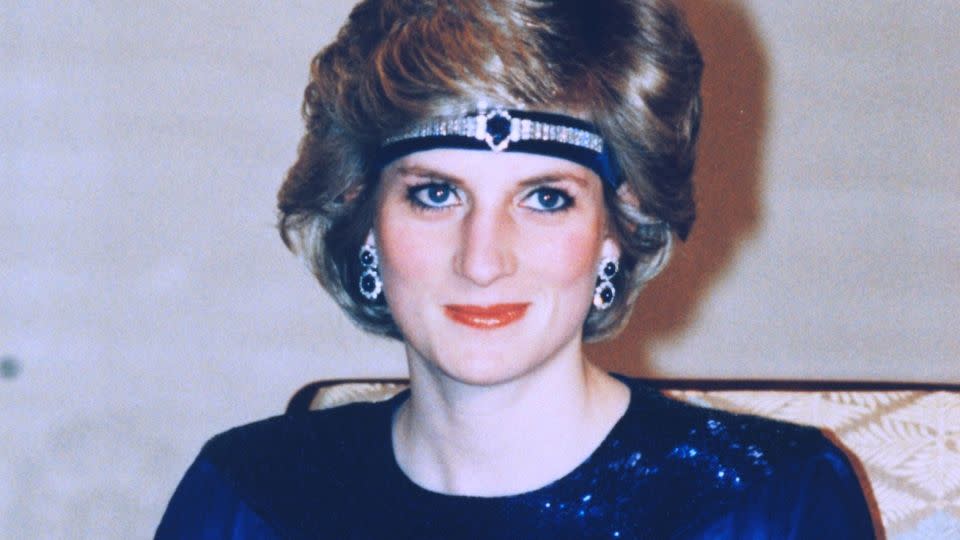
Diana also nodded to the royal institution she had married into — like when milliner Stephen Jones sewed the Prince of Wales’ feathers into the traditional tam-o’shanter hat she wore to Scotland’s annual Braemar Gathering.
Matthew Storey, curator of the 2021 Kensington Palace exhibition “Royal Style in the Making,” said over email that royal family members typically “wear clothes that subtly pay tribute to the culture of the country they are visiting.” But Princess Diana continued doing so in the years following her separation from Charles in the early 1990s (opting to wear a traditional shalwar kameez on a visit to Pakistan in 1996, for example), and it seems likely she would have continued the thoughtful approach to her working wardrobe.
Beyond paying homage to host countries, Princess Diana also used fashion to spotlight the charities and institutions she admired by wearing their gear to polo matches or public events. She was “light years ahead of us, even then,” said Carlson, pointing to the current trend of using merchandise to support the organizations people identify with.
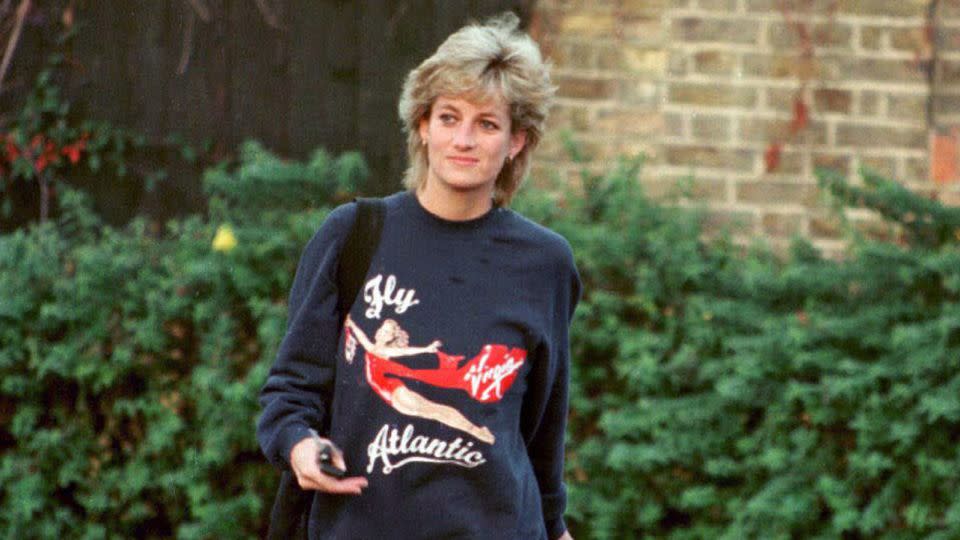
“If anything, she taught us all to appreciate merch: from universities you’ve never attended, sports teams from other people’s hometowns, and even airlines you’ve never flown,” he said, referencing the times Diana paired a Northwestern University or Virgin Atlantic sweater with cycle shorts.
It’s impossible to say which causes Diana would have attached herself to today. But given her lifelong advocacy of HIV/AIDS awareness, the various capsule collections released for World AIDS day by brands from Maison Margiela to Victoria Beckham’s eponymous label, may well have caught her attention.
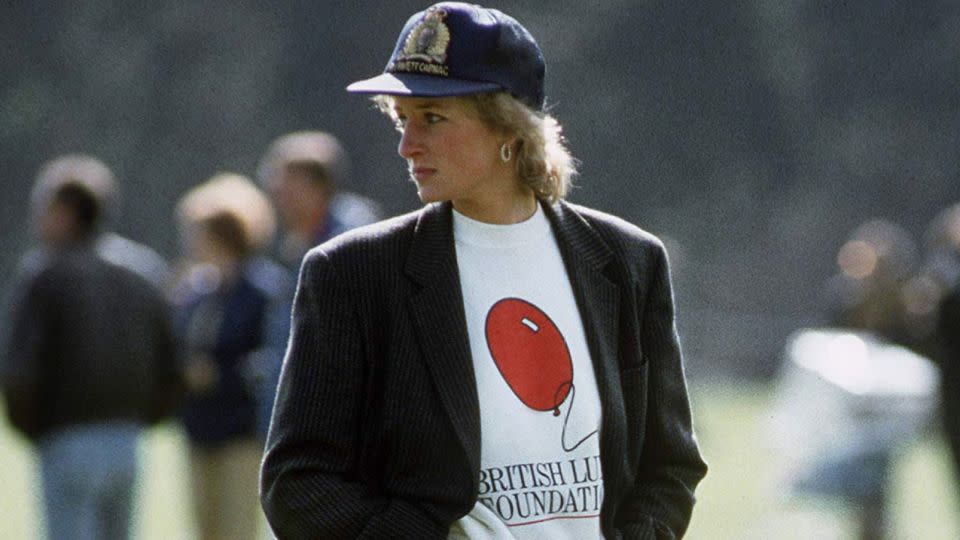
But Diana’s style statements were not always so literal. Fashion researcher Eloise Moran, who founded the Instagram account Lady Di Revenge Looks, likened the princess’ wardrobe to “armor.” As well as defending her from attack, her clothes helped her take back control of her narrative — from both the palace and British press — following her 1996 divorce from Charles.
“She became, by the end, a really strong figure,” Moran said in a video interview. “I think people were afraid of her — and of what she would do next.”
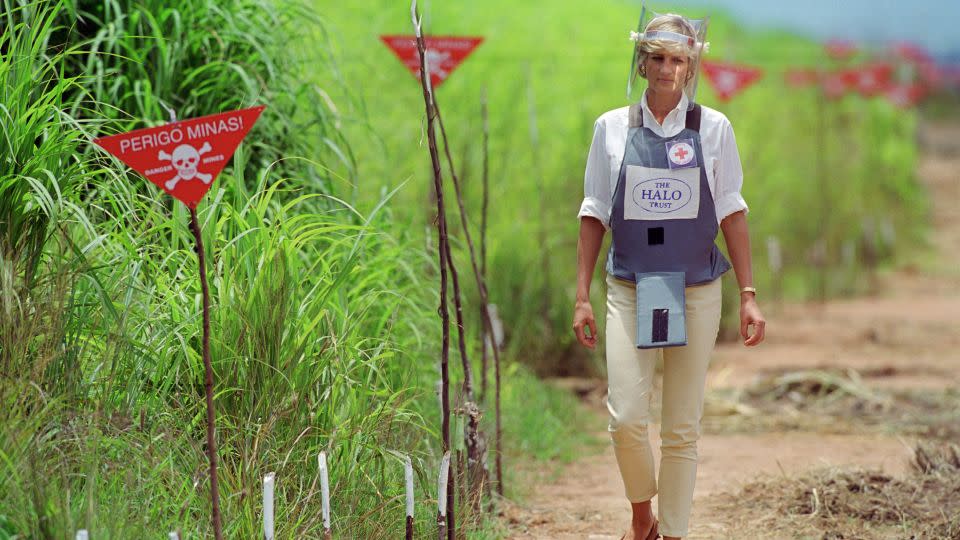
Her defiant approach would certainly resonate in today’s world. It may even have influenced how high-profile women often use their wardrobes to protect themselves and make covert political statements, from Alexandria Ocasio-Cortez calling her red lipstick “war paint” to former New Zealand Prime Minister Jacinda Ardern’s decision to wear a traditional feathered Maori cloak to Buckingham Palace.
An eye for iconic pieces
In her early years, Diana gravitated towards British designers – and often transformed the fortunes of those whose pieces she was photographed wearing. “She wanted to wear British because she felt it was something positive she could do for the fashion industry,” her stylist Harvey wrote in her 1997 Vogue tribute.
Take the aforementioned sheep sweater, which went viral long before the internet age, its lone black sheep seeming to signal Diana’s outsider status in the royal family (the striking knit is set to go on auction later this year at Sotheby’s in New York). Carlson, who collaborated with the garment’s original creator, Warm & Wonderful, on 2020’s re-release, said the publicity was “life changing” for designers Joanna Osborne and Sally Muir. The pair was able to open a storefront, he said, with their designs also stocked in department stores from New York to Japan.
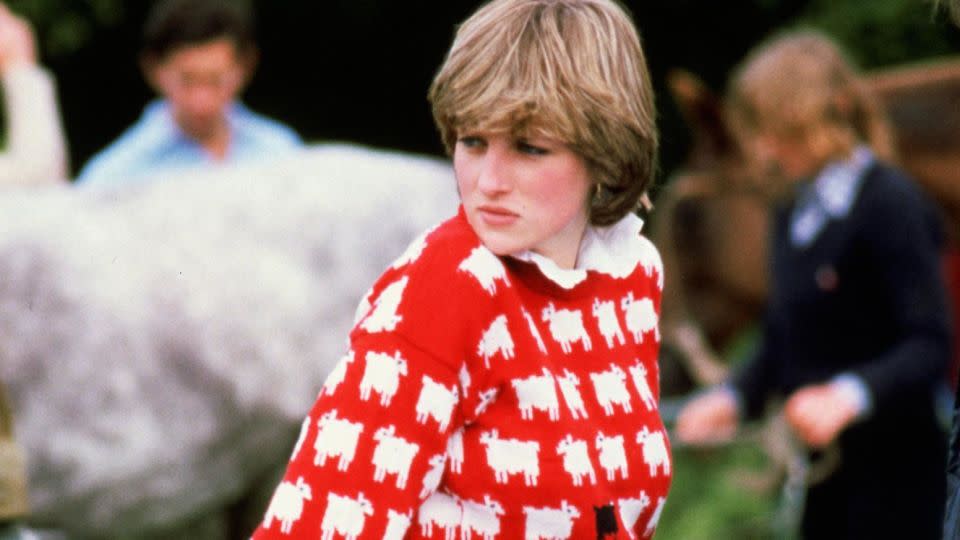
“Members of the royal family know that the clothes they wear are likely to make the headlines – and immediately sell out,” said Morgane Le Caer, content lead at the fashion search platform Lyst, in an email interview. It’s a trend continued by Meghan Markle and Kate Middleton, said Le Caer, adding that the next generation of royal spouses have “become powerful influencers in their own right.”
Both Moran and Carlson speculated that, were Princess Diana were alive today, she might have revisited her statement knitwear days (a period epitomized by her Gyles & George sweater reading, “I’m a luxury no one can afford”). Moran said, “Maybe she’d pay tribute to her younger affinity towards tongue-in-cheek knits.”
“I think she would have loved the Magda Archer x Marc Jacobs (collaboration), particularly the ‘Stay away from toxic people’ sweater,” she added, referencing an item worn by celebrities including Harry Styles.
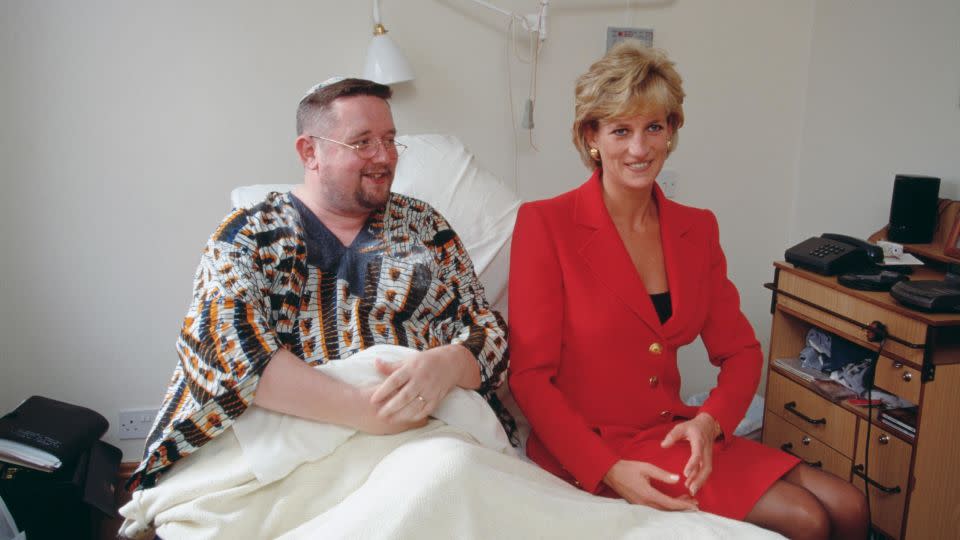
Diana was loyal to the UK-based designers she worked with throughout her life. Although some her apparent favorites, like Catherine Walker, have since passed away, others like Bruce Oldfield remain active, and the late princess may have continued to seek out their designs.
But by the end of her life, Diana was experimenting more widely with international labels. As her star rose, she formed close relationships with designers like Gianni Versace, whose funeral she attended, and Christian Dior, who in 1996 renamed a handbag she adored — and owned in every color — the “Lady Dior.” Versace, in particular, helped Diana develop a more daring wardrobe as she evolved into a global charity ambassador, designing mini dresses and First Lady-esque pink skirt suits that she paired with Phillip Sommerville pillbox hats.
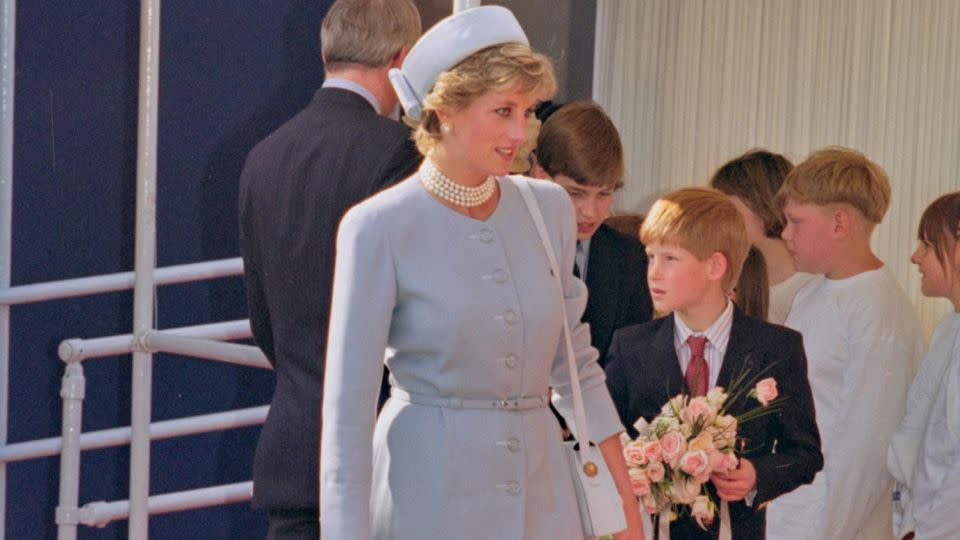
“She was a true chameleon, and liked to mix things up, from both high and low designers,” Moran said. “I know that would still be the case if she were alive today.”
But, Carlson added, she would have cast a wide net. “I can’t see her in the thrall of any one designer or another,” he said.
An evolving style
The latter years of Princess Diana’s life were defined by joyful, fashionable experimentation as she stepped out from the palace’s shadow. For Moran, who started the Lady Di Revenge Looks account in the wake of her own breakup, Princess Diana was an “everywoman figure” whose post-breakup transformation served as an inspiration.
A newly empowered Princess Diana traded in court shoes for “super high Jimmy Choos and Chanel shoes,” according to Moran, which would have seen her towering over her former husband who was around the same height. Designer Roland Klein once told British Vogue that, in one of his last appointments with Diana, she had asked for a “really short” dress. “I demurred,” he recalled, “but she said, ‘Whatever I do I’ll be criticized, so let’s just go for it.’”
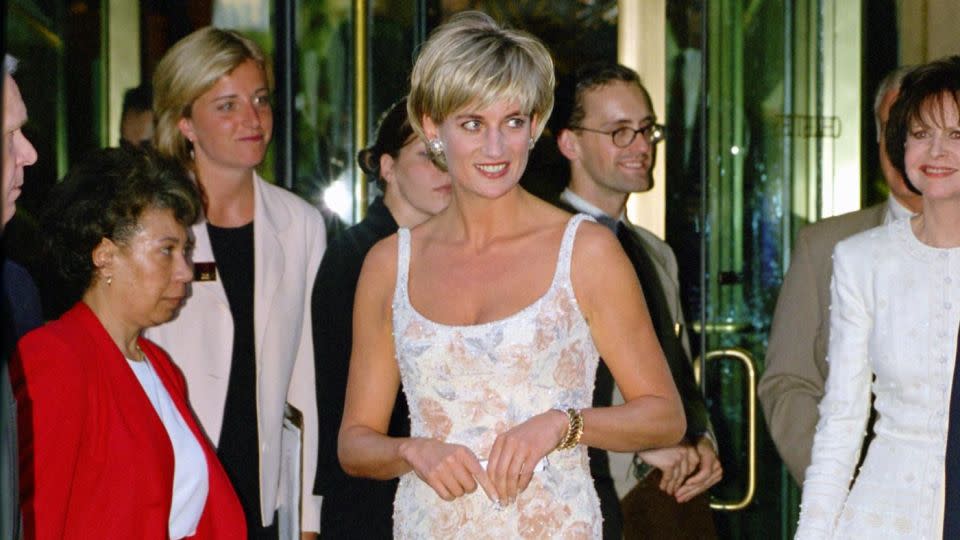
By this point, Diana had found silhouettes and designers that worked for her, Moran said.
“I think she really figured out her look by the time she hit age 35 (or) 36 — so I can’t see her dressing that differently,” she explained, suggesting that Diana’s wardrobe staples (“blazers, the crisp Giorgio Armani jeans, the Versace and Dior handbags”) would likely still work for her today.
“I could also just as easily see her (turning to) the sinuous, minimal silhouettes by The Row,” Moran added.
For Princess Diana, the single outfit that seemed to mark her liberation was her black Christina Stambolian “revenge dress,” the asymmetric, figure-hugging mini dress she wore to a London event the day Charles’ publicly admitted to having an affair.
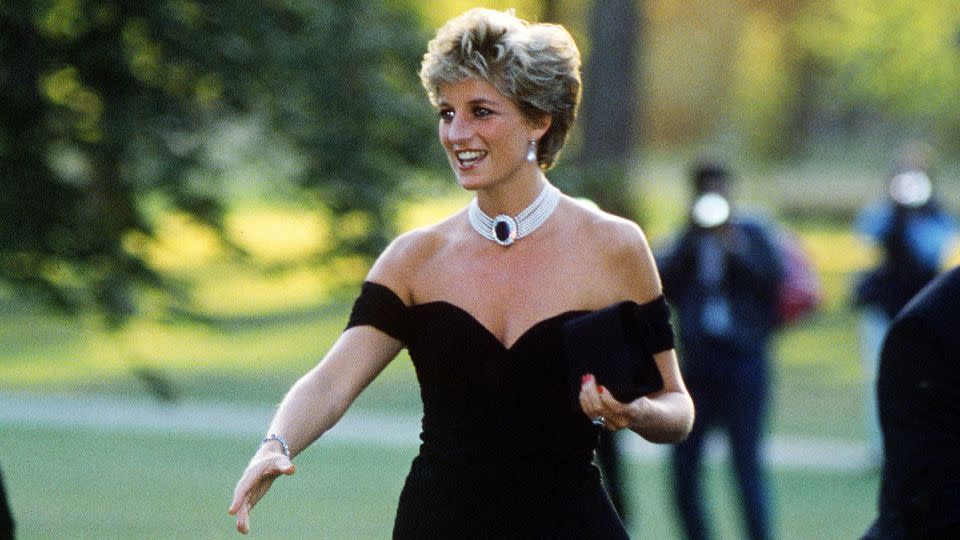
“She completely spun her narrative that night,” Moran said. “From there, I think that was the line drawn where she was in control, and she was showing that to everybody. You can truly make people afraid of you — or intimidated by you, or respect you, or whatever it is — through clothing.”
Although Princess Diana was known to re-wear outfits, it is, perhaps, unlikely that she would have revisited her most iconic garments and accessories, were she alive today. She famously purged her wardrobe just months before her death, auctioning off many of her defining garments – including the Stambolian dress and a blue velvet Victor Edelstein gown that she had worn when dancing with John Travolta at the White House – to raise money for HIV/AIDS charities.
The sale was symbolic in many ways. By making closet space for what would have been her next chapter, Diana seemed to leave palace life and marriage behind. And she may have further distanced herself from the royal family through fashion — something that was already happening before her death, former stylist Harvey has noted, writing that the princess deliberately avoided labels worn by her ex-husband’s family.
“I don’t think she would dress like the other royals,” Carlson said. “And I think that, rather than following fashion or anyone’s expectations, she would have dressed in a way that reflected her own life, her own experiences, her own feelings and her own comfort, too.”
This article was originally published in 2021. Titles of royals and government figures have been updated to reflect a change in roles.
For more CNN news and newsletters create an account at CNN.com

